Garden Pea Plants Over 80cm Will Need To Use One Of These Support Methods
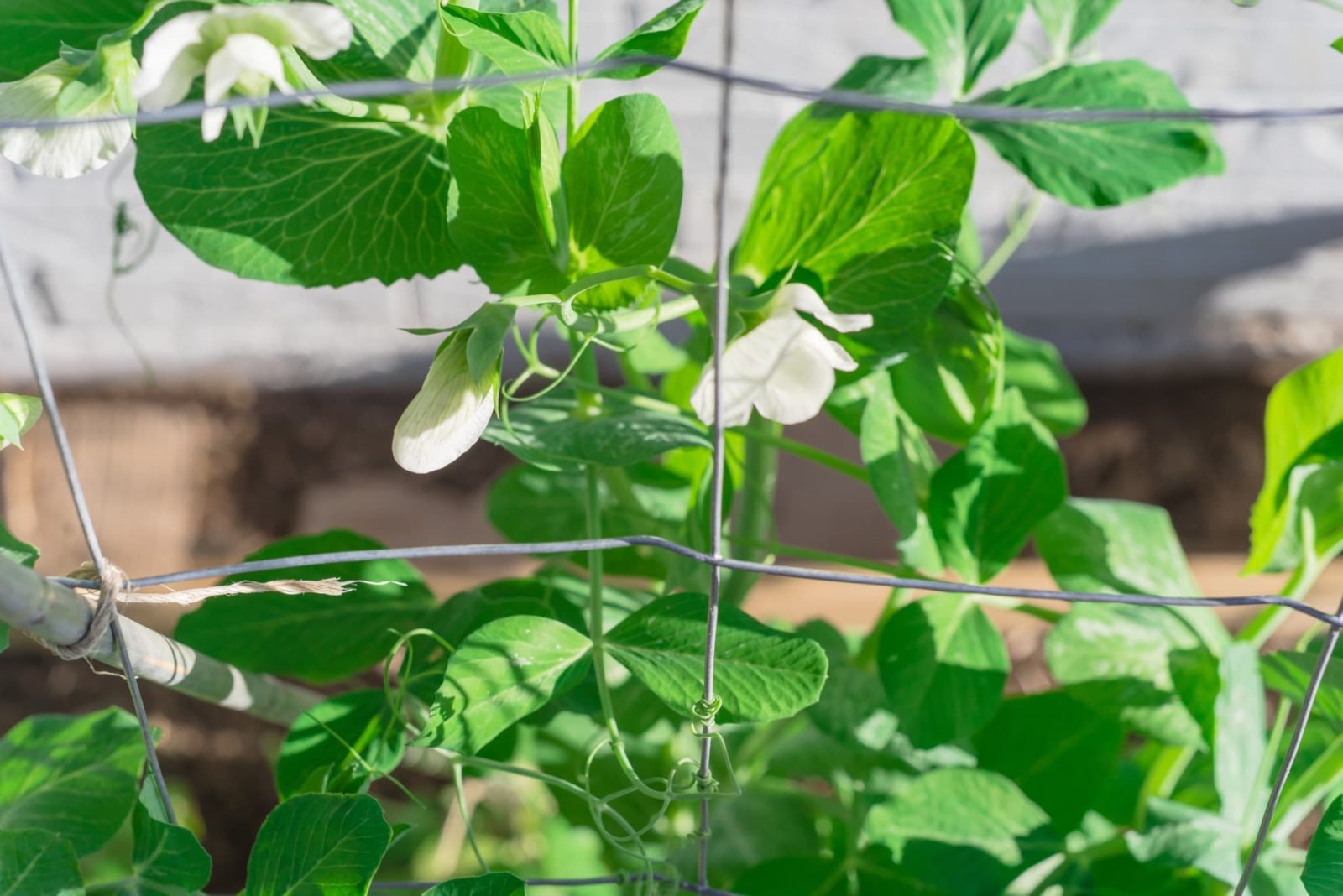
VEGETABLES > PEAS > SUPPORT
Reviewed By PETER LICKORISH

Peter is a Horticulture Lecturer and self-employed Horticulturist, with a passion for diverse areas of the industry - from garden design to the science behind plant growth and propagation. He has completed the Royal Horticultural Society’s Master of Horticulture (MHort) Award and lectures on RHS courses at Bedford College.
Contributions From EMILY CUPIT

Emily is a Gardening Writer, Photographer and Videographer from Derbyshire, UK. She is the Founder of Emily's Green Diary - a community of more than 75,000 people who share in her gardening journey.
PEAS GUIDES
Harvesting
Support
Sowing
Dwarf varieties of Garden Peas need little to no support, but bushy ones may or may not depending on their respective habits and sizes, and tallish climbing vines really should be supported.
As a guideline, varieties that grow to less than 50cm should not require much support, while those that rise to 80cm and above should be supported.
Anything in between is a judgement call.
We outline three methods by which you can support your Garden Pea plants.
Method 1: Netting
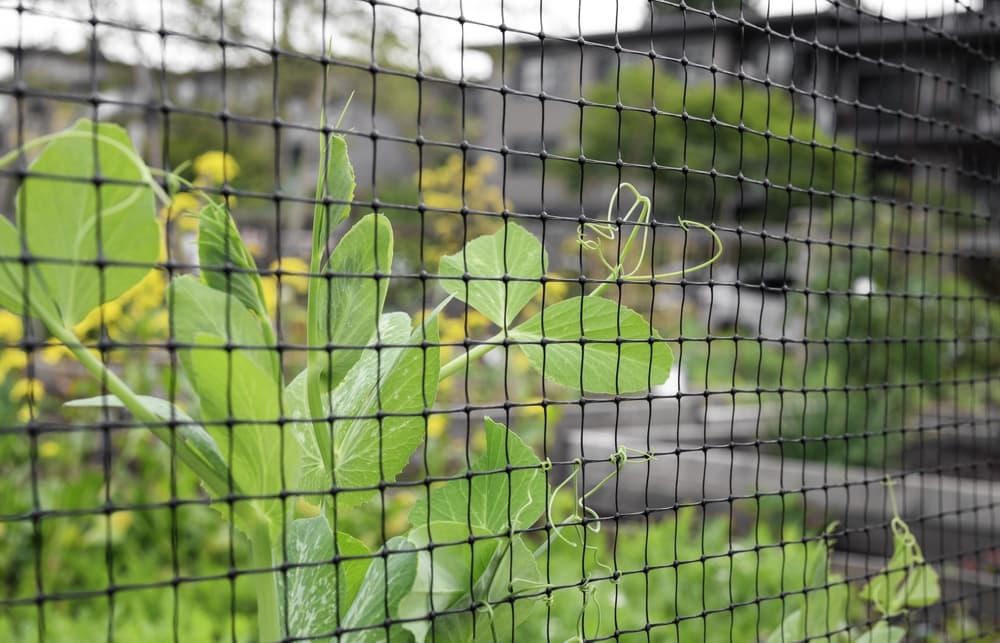
You can find several kinds and designs of netting identified as ‘Trellis Netting,’ ‘Vine Netting,’ or ‘Netting Support for Vines.’
This type of netting should be hung, vertically, quite close to the plant.
It may be hung from the roof’s rafters, off a garden cabana, or on a simple for-purpose frame.
“You could make a rectangular frame with legs by tying four canes together tightly,” suggests Horticultural Consultant Peter Lickorish.
We suggest you set up your netting at any point from the time you sow Garden Peas seeds to when the little plants get to be about 20cm in height.
As the little plants grow, they will readily start to climb via their tendrils up the netting and be supported by it, avoiding the need to tie them in.
Method 2: Staking
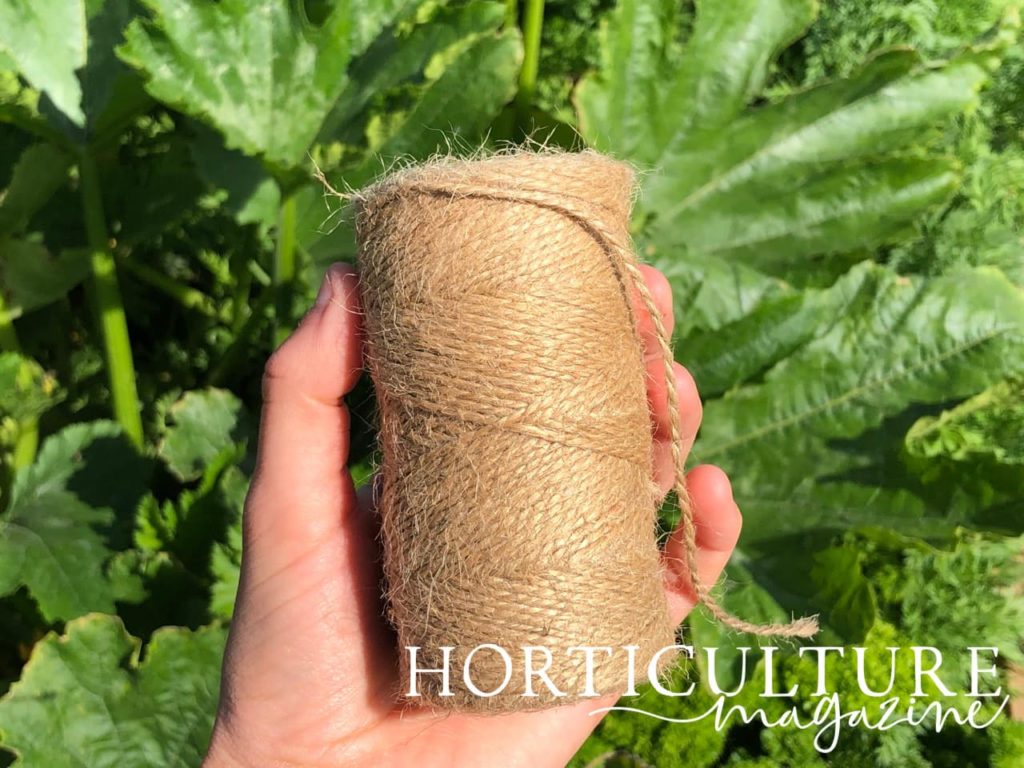
You can support vines with four bamboo canes or with three.
If you use four canes then they should be arranged in the form of a square that will enclose the plant.
Drive the canes into the ground so that they are firmly set.
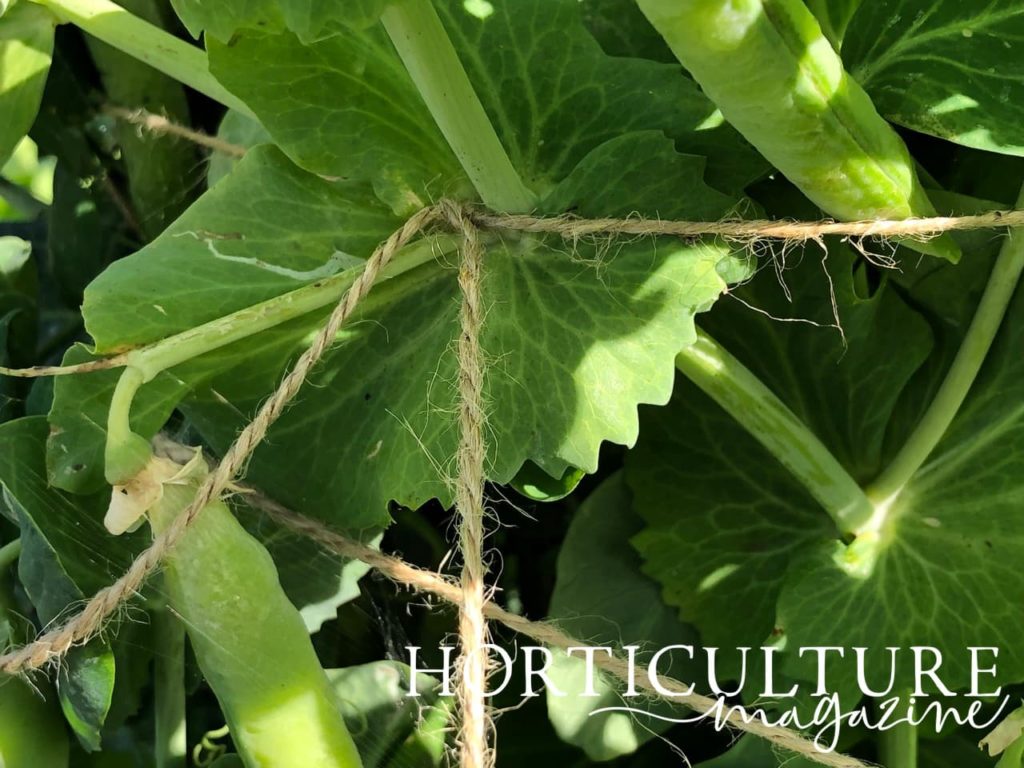
Each side should measure about half the eventual spread of that variety.
If you use three canes then fuse, nail, tie or staple them together at one end with the other ends splayed outward.
The objective is to make a frame like an elongated triangle-based pyramid; a frame resembling a three-sided letter ‘A’.

Place this over the spot where the plant will emerge and push the canes into the ground.
In each case you may wet the soil and pack it around the base of the canes to ensure firmness and rigidity.
In either case tie twine tightly around the lower parts of the framework, and soon after the seedlings emerge, train them on the twine if necessary though their tendrils will likely ‘find’ the supports.
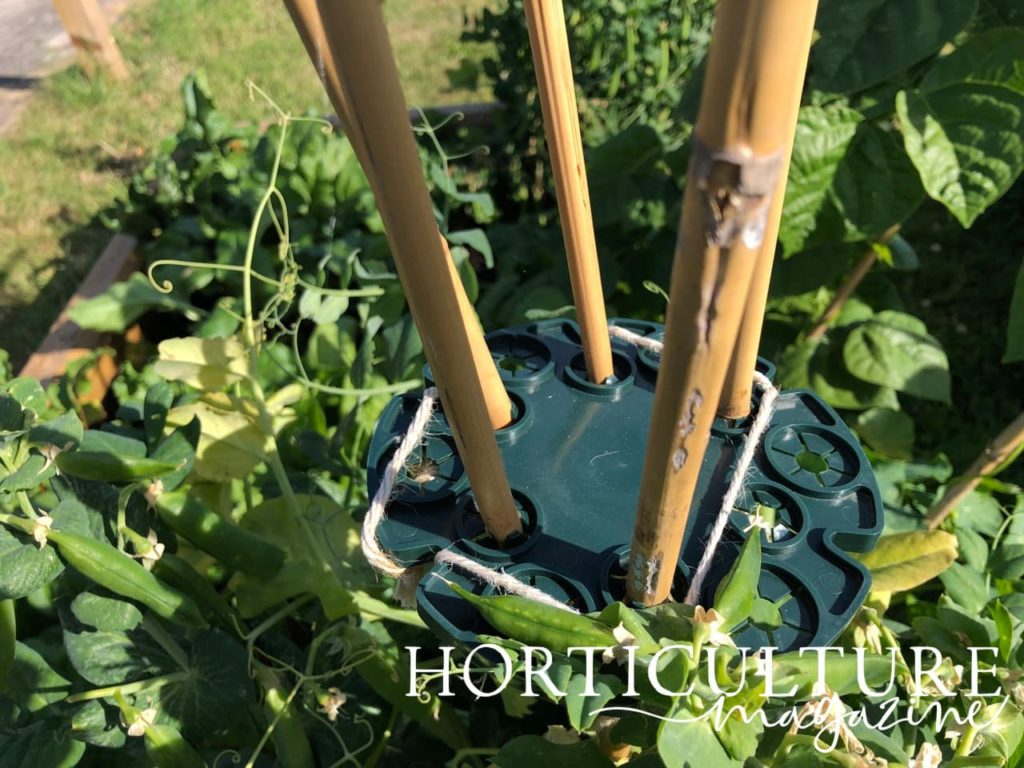
Thereafter, tie twine, tightly, all the way up the framework every 20cm or so. If the twine slips, make lateral notches in the canes.
We strongly recommend against driving canes or stakes close to even a growing plant (let alone a mature one) – doing so may damage or sever the roots.
Canes may be driven into the ground at the time of sowing the seeds or soon thereafter.
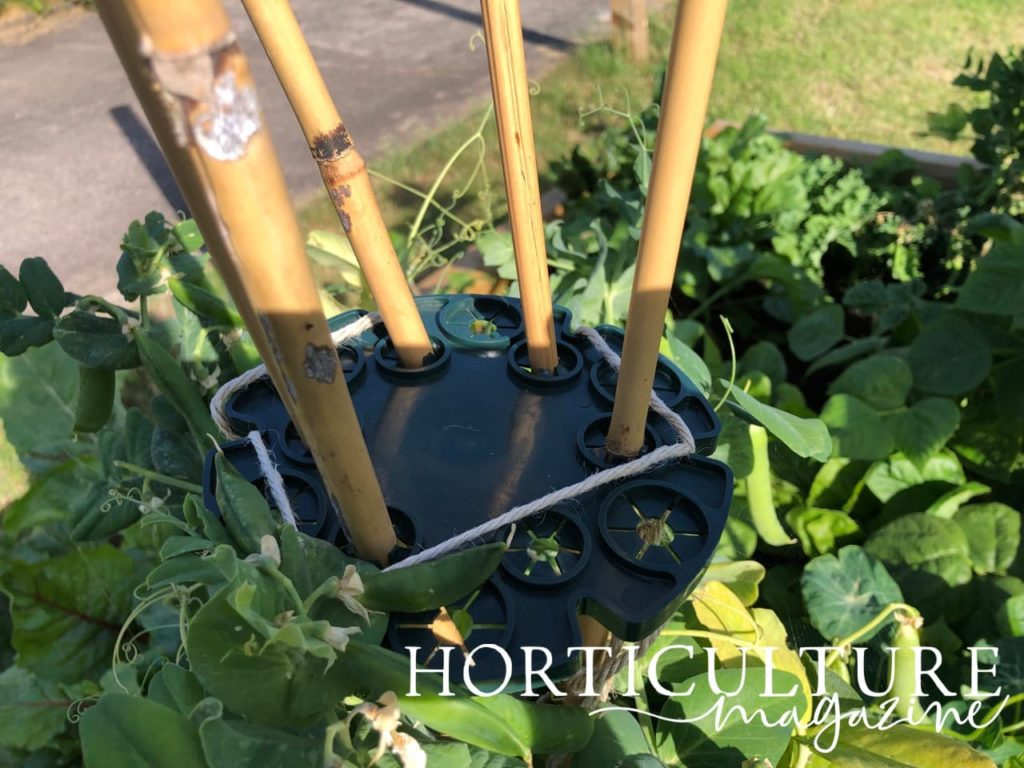
If transplanting, place supports in the ground immediately thereafter.
You will know where you can insert the canes such that they are away from the very narrow root system.
“For dwarf varieties, some support is still a good idea to stop the plants from becoming a tangled mess,” says Peter.
“Driving lengths of woody prunings, that are around 50cm long, into the ground gives a loose framework.
“If these stems have branches, even better, as peas can attach to these too.”
Method 3: Free-Standing Support
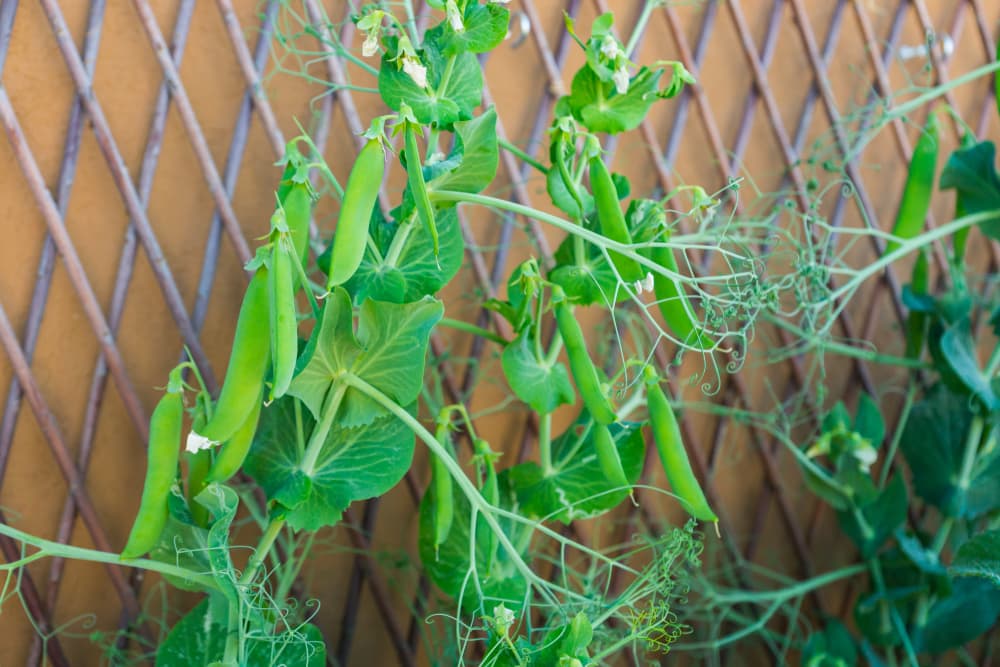
You can set up a free-standing trelliswork support at any time in the plant’s lifecycle so long as the support is not fully enclosed and has an open design.
An arched pergola is a very good option.
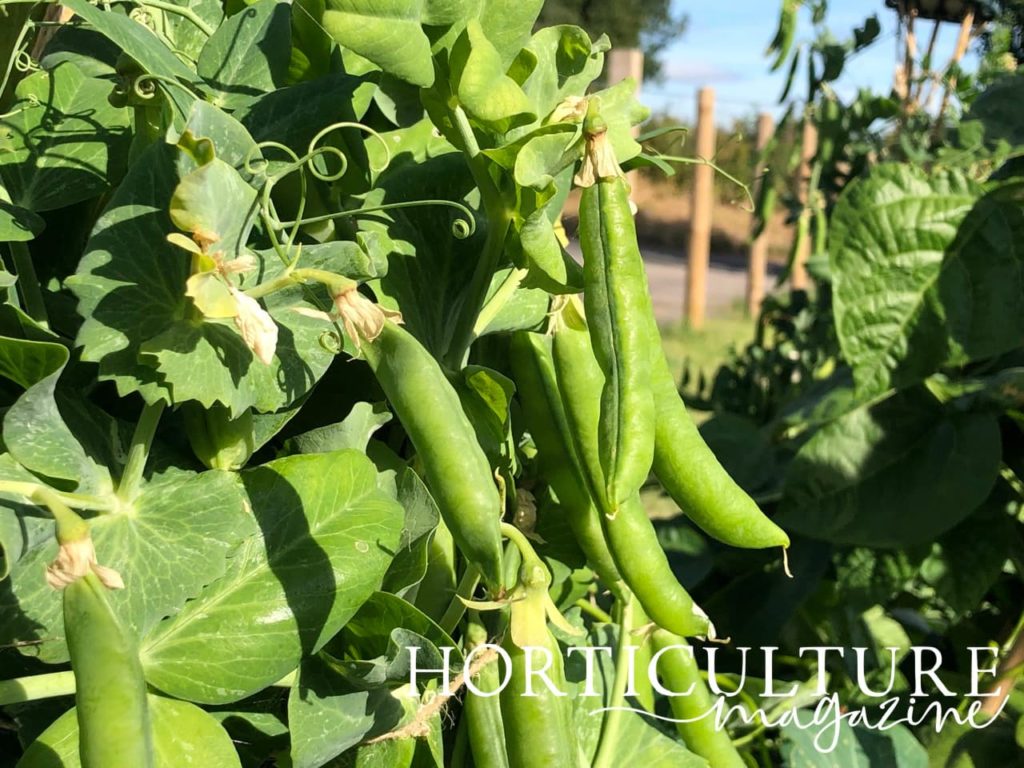
One person should simply lift up the vine, which may even be overgrown, while another sets the support in place after which the vine can be draped on the support.
“Supports may have their own feet or spikes to drive in the ground, or a cane can be threaded through alternate sides of a flexible trellis or mesh at 1m intervals,” Peter adds.
The plant’s tendrils will happily grip the trelliswork in short order.
Wet the soil under the support and cake some mud around it to firm it up.
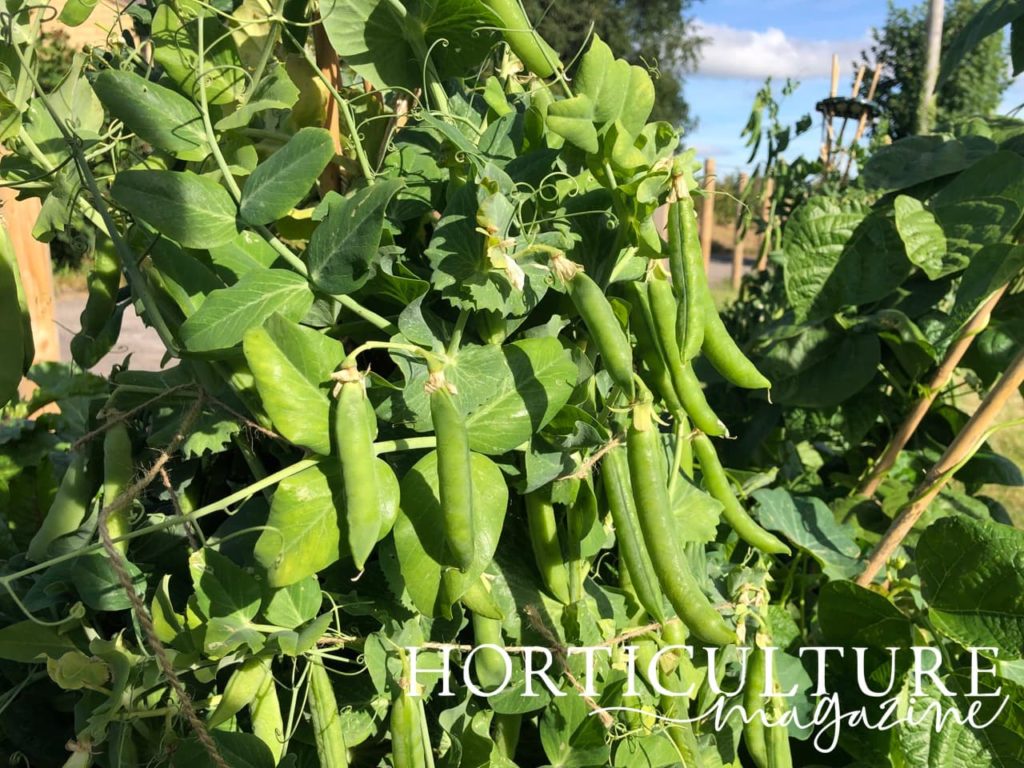
Such a support should also be sufficiently heavy and have a low centre of gravity.
Otherwise, when the free-standing support is covered by a bushy climber, a blustery wind can blow it over.
Therefore, if necessary, tie it down or weigh it down.
U-shaped pegs can be driven in along the bottom row of trellis for support.

